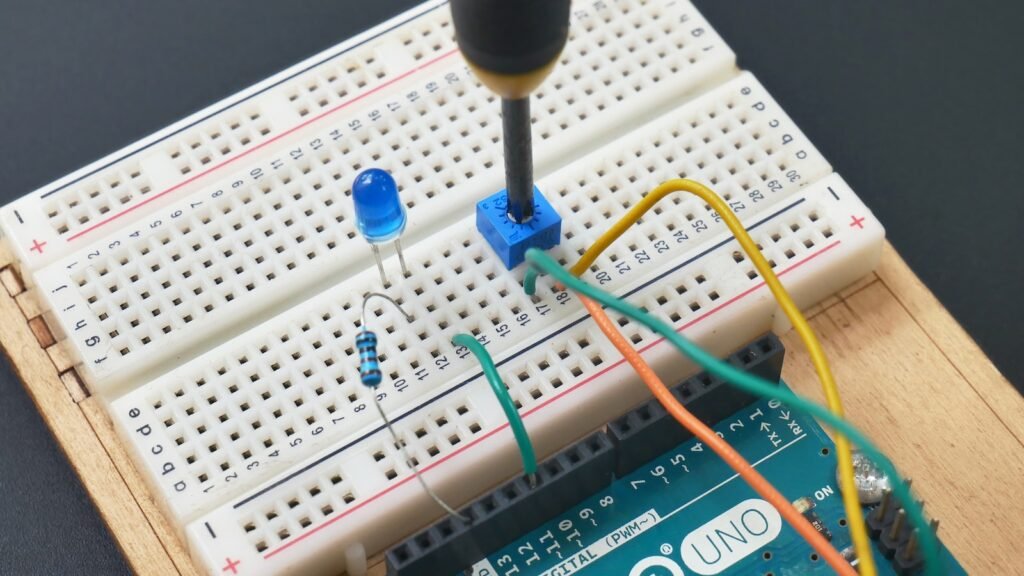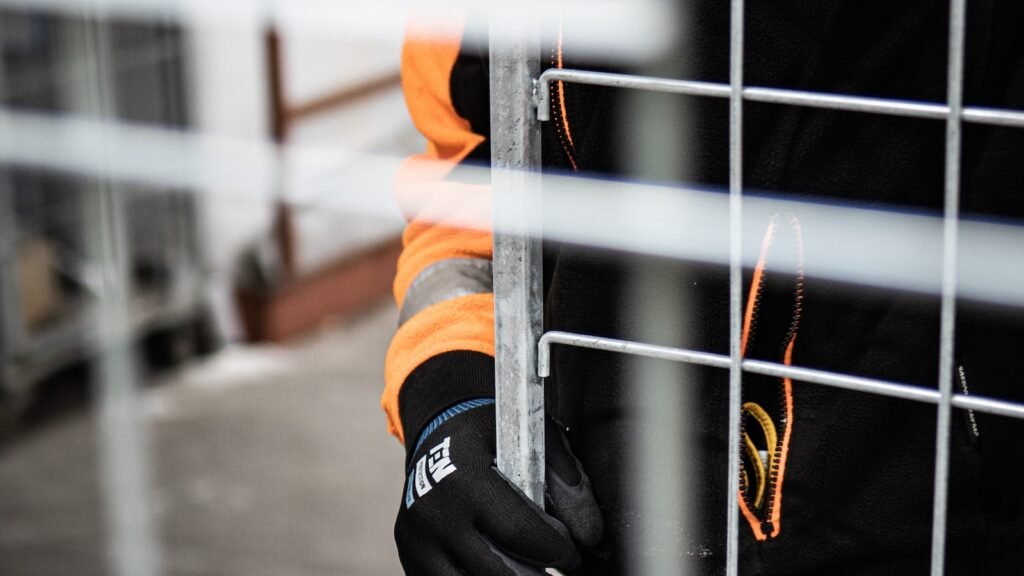The medical industry, with its stringent standards and relentless pursuit of precision, presents unique challenges for metal stamping. As medical devices become more intricate and demand for them grows, understanding the nuances of metal stamping in this sector becomes crucial. Here’s a deep dive into the key considerations one must be aware of

Precision is Paramount
In the intricate world of medical devices, precision isn’t just a luxury—it’s a necessity. Every scalpel’s edge, every joint in a robotic surgical arm, and every minuscule component of a cardiac implant must be meticulously crafted to exact specifications. Here’s why:
Unwavering Tolerances: In industries like automotive or consumer electronics, a slight variance in a part might be acceptable. But in medical devices, even the tiniest deviation can have grave consequences. For instance, an imprecise component in a pacemaker could lead to device malfunction, endangering a patient’s life. Hence, the tolerances in medical device stamping are some of the tightest in the manufacturing world.
The Imperative of Medical-Grade Metals: Not all metals are created equal. While a particular alloy might be perfect for a car’s body or a kitchen appliance, it could be disastrous when implanted in the human body. Medical devices demand metals that are biocompatible, meaning they won’t react adversely with human tissues. Metals like surgical stainless steel, titanium, and certain nickel and cobalt alloys are often preferred. These metals don’t just offer the required strength and durability; they also ensure that the body doesn’t reject the device.
Consistency is Key: Imagine a scenario where two batches of the same surgical instrument perform differently. Such inconsistencies can be catastrophic in the medical world. Whether a manufacturer is producing ten devices or ten thousand, each one must function identically to its counterparts. This level of consistency ensures that surgeons and medical professionals know exactly what to expect from a device, allowing them to focus on their primary objective: patient care.

Material Selection Matters
Delving into the world of medical devices, it becomes evident that every choice made during the manufacturing process carries significant weight. Among these choices, the selection of the right metal stands out as a pivotal decision. Here’s a closer look at why the choice of material is so crucial:
Corrosion Resistance: The human body is a complex environment, filled with various fluids, from blood to gastric juices. When a medical device, be it a surgical tool or an implant, is introduced into this environment, it’s essential that it remains unaffected. Corrosion can compromise the device’s integrity, leading to malfunctions or, worse, releasing harmful substances into the body. Metals like stainless steel and titanium, known for their excellent corrosion resistance, are often the go-to choices for such applications.
Strength and Durability: A medical implant, such as a hip replacement or a stent, needs to withstand the wear and tear of daily life. It’s not just about surviving the initial implantation but ensuring longevity without degradation. The material must be robust enough to handle mechanical stresses, whether it’s the constant beating of a heart valve or the weight-bearing role of a spinal implant. Alloys that combine strength with flexibility, like cobalt-chromium, often find favor in such demanding applications.
Biocompatibility: Perhaps the most crucial factor, biocompatibility ensures that the chosen metal doesn’t harm the body. Some metals, when implanted, can trigger immune responses, leading to complications like inflammation or device rejection. It’s imperative to choose metals that are inert or beneficial in a biological context. Titanium, for instance, isn’t just strong and corrosion-resistant; it’s also known for its excellent biocompatibility, often integrating seamlessly with surrounding bone and tissue.

Sterilization and Cleanliness
In the realm of healthcare, cleanliness isn’t just about appearances; it’s a matter of life and death. Medical devices, whether they’re used externally or implanted within the body, come into direct contact with patients. Any contamination could lead to infections, complications, or even fatal outcomes. This makes the sterilization process paramount. But how does metal stamping fit into this picture? Let’s delve deeper:
Heat Resistance: One of the most common methods of sterilizing medical equipment is autoclaving, which involves subjecting the devices to high-pressure steam at temperatures often exceeding 121°C (250°F). For metal stamped parts, this means they need to be crafted from materials that can repeatedly endure such high temperatures without warping, weakening, or undergoing any form of degradation. Metals like stainless steel and certain titanium alloys are favored in this regard due to their ability to withstand high thermal stresses.
Chemical Resistance: Beyond heat, chemical sterilants like ethylene oxide, hydrogen peroxide, and formaldehyde are often employed to disinfect medical devices. These chemicals are potent and can be corrosive. The metal stamped components of medical devices must resist these chemicals’ aggressive nature. This resistance ensures that the device remains intact and functional, even after multiple rounds of chemical sterilization. Additionally, resistance to chemicals ensures that no harmful residues remain on the device, which could harm patients.
Smooth Surfaces: While not directly related to the metal’s properties, the stamping process must ensure that the components have smooth surfaces, free from crevices or rough patches. Such imperfections can harbor bacteria or other pathogens, making sterilization less effective. A smooth surface not only aids in effective sterilization but also minimizes the risk of tissue irritation or injury when the device is used.

Regulatory Compliance and Certifications
Navigating the intricate maze of the medical industry’s regulations can be daunting. However, these regulations are in place for a reason: to ensure the utmost safety and efficacy of medical devices that millions rely on daily. When it comes to metal stamped parts used in these devices, the stakes are even higher. Here’s why regulatory compliance and certifications are non-negotiable:
Adherence to FDA Guidelines and International Standards: The U.S. Food and Drug Administration (FDA) sets stringent guidelines for medical devices, ensuring they’re safe for human use. These guidelines cover everything from the materials used to the manufacturing processes and final product testing. For metal stamped components, this means they must be crafted from approved materials and undergo specific tests to verify their safety and performance. Beyond the FDA, international bodies like the International Organization for Standardization (ISO) have their own set of standards, such as ISO 13485, which pertains specifically to medical devices’ quality management systems.
Rigorous Testing and Quality Checks: Before a medical device hits the market, it undergoes a battery of tests. For metal stamped parts, these tests might include tensile strength assessments, corrosion resistance evaluations, and biocompatibility tests. Each test ensures that the component can withstand the rigors of medical use without failing or causing harm. Regular quality checks during the manufacturing process further ensure that every batch of components meets the set standards, minimizing the risk of defects.
Production in Certified Facilities: It’s not just about the final product; where and how these components are made matter immensely. Facilities producing metal stamped parts for medical devices must be certified, ensuring they adhere to specific cleanliness and quality standards. This might involve having cleanrooms, specialized ventilation systems, and strict protocols to prevent contamination. Regular audits and inspections ensure these facilities maintain the highest standards at all times.

Advanced Stamping Techniques for Miniaturization
The medical world is witnessing a paradigm shift towards miniaturized devices. From implantable monitors to drug delivery systems, smaller often means less invasive, more comfortable, and more efficient. But as these devices shrink, the challenge of crafting their intricate components grows. Enter advanced stamping techniques, which are revolutionizing the way we approach miniaturization in medical devices:
Greater Detail and Precision: Traditional stamping methods might fall short when it comes to the minute details required for tiny medical devices. Advanced techniques, especially micro-stamping, allow for the creation of parts with incredibly fine details. This precision ensures that even the tiniest components function optimally, a critical factor when a slight deviation can impact a device’s performance or a patient’s health.
Reduced Waste of Expensive Medical-Grade Metals: In the medical world, the metals used aren’t just any metals. They’re often high-quality, biocompatible, and, consequently, expensive. Advanced stamping techniques are more efficient, ensuring that every bit of material is used optimally. This not only reduces costs but also aligns with the growing emphasis on sustainability in the medical industry.
Production of Intricate Parts for Devices: Consider the pacemaker, a marvel of medical engineering. It’s small enough to be implanted near the heart, yet it houses a battery, electronic circuits, and leads. Or take hearing aids, which pack advanced technology into a device small enough to fit inside or behind the ear. Crafting the metal components for such devices requires advanced stamping techniques capable of producing intricate parts with impeccable precision.

Cost Implications
In the intricate world of medical devices, where precision meets life-saving functionality, there’s a delicate balance to be struck between ensuring top-notch quality and managing costs. While no compromise can be made on the former, understanding the cost implications can lead to more informed decisions and efficient production. Here’s a closer look at the factors that play a pivotal role in determining the cost of metal stamped parts for medical devices:
Choice of Material: The type of metal or alloy chosen directly impacts the cost. While medical-grade metals are non-negotiable due to their biocompatibility and durability, there’s still a range to choose from. Titanium, for instance, might be more expensive than certain stainless steel grades, but its strength and corrosion resistance might justify the cost for specific applications.
Complexity of the Stamped Part: A simple, flat component will invariably cost less than a complex, multi-dimensional one. Advanced techniques like micro-stamping or deep drawing, which are used for intricate designs, might also add to the cost. The number of processes a part has to go through – from stamping to finishing – can also influence the final price.
Volume of Production: Economies of scale play a significant role in metal stamping. Producing a large number of parts in a single run can reduce the cost per unit. This is because certain fixed costs, like machine setup or design modifications, get distributed over a larger number of parts. However, it’s essential to balance volume with demand to avoid overproduction and wastage.

Case Studies: Successful Implementations in Medical Device Stamping
Navigating the intricate world of medical device stamping is no small feat. With the stakes as high as patient safety, manufacturers are constantly pushing the envelope to achieve unparalleled precision and reliability. Let’s delve into some notable case studies that showcase the triumphs and innovations in this realm:
Medtronic’s Micro-Stamping Mastery: Medtronic, a global leader in medical technology, faced the challenge of producing ultra-precise components for their state-of-the-art pacemakers. By adopting advanced micro-stamping techniques and investing in rigorous quality checks, they managed to achieve consistent accuracy, even at microscopic scales. Their success story underscores the importance of embracing cutting-edge technology to meet evolving medical needs.
Johnson & Johnson’s Journey with Biocompatible Metals: When Johnson & Johnson ventured into producing orthopedic implants, the choice of material was paramount. They opted for a titanium alloy, prized for its strength and biocompatibility. However, stamping this alloy presented challenges due to its strength. Through innovative tooling designs and specialized stamping processes, they achieved a perfect blend of durability and biocompatibility.
Boston Scientific and Sterilization Challenges: Boston Scientific, known for its diverse range of medical devices, encountered a challenge with a particular stamped component that showed signs of degradation after sterilization. A deep dive into the issue revealed that the metal’s chemical composition was reacting adversely to the sterilization process. By tweaking the alloy mix and refining the stamping process, they not only resolved the issue but also enhanced the component’s overall durability.
Stryker’s Cost-Effective Stamping Solutions: While Stryker is renowned for its high-quality medical devices, they also faced the universal challenge of managing costs. By optimizing their production volumes, choosing cost-effective yet reliable materials, and streamlining their stamping processes, they managed to strike a balance between quality and cost, setting an industry benchmark.

The Future: Innovations on the Horizon
The realm of medical device stamping is ever-evolving, with each passing year ushering in groundbreaking innovations. As we stand on the cusp of a new era, let’s delve into some of the most promising trends and technologies set to redefine the landscape:
Smart Materials – Beyond Mere Metal: Imagine a stent that expands or contracts in response to blood flow or an implant that releases medication when it detects inflammation. The future beckons the use of smart materials in metal stamping, materials that can sense and adapt to the body’s dynamic conditions, offering tailored therapeutic actions.
Electronic Integration – The Rise of Smart Implants: The line between electronics and medical devices is blurring. Upcoming stamped components will not just be passive structures but will house miniature electronics, sensors, and even communication modules. Think of implants that can relay real-time data to physicians or even devices that can be remotely adjusted post-surgery.
Rapid Prototyping – Speeding Up Innovation: The medical field demands constant innovation. With advancements in rapid prototyping, the journey from concept to tangible device is becoming faster than ever. This not only accelerates device development but also allows for real-time testing and iterations, ensuring the final product is nothing short of perfection.
Personalized Stamping – Tailored to the Individual: With the rise of personalized medicine, there’s a growing demand for medical devices tailored to individual patients. Advanced stamping techniques, combined with detailed medical imaging, will allow for the production of implants and devices that fit the patient’s anatomy with unparalleled precision.

Conclusion
Metal stamping in the medical device sector is a delicate balance of precision, quality, and cost-effectiveness. As technology advances and the demand for more sophisticated devices grows, the industry must evolve, ensuring patient safety and device efficacy remain at the forefront.



